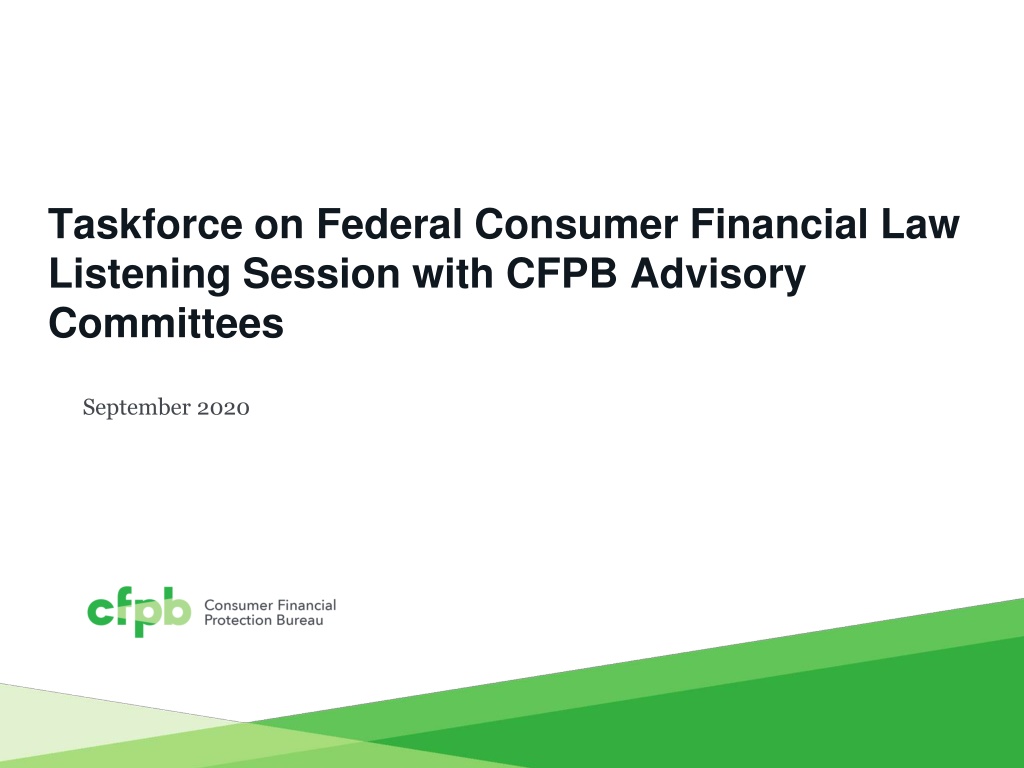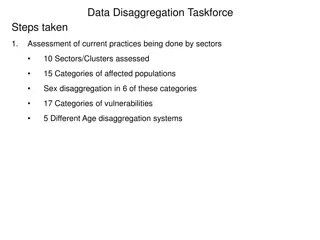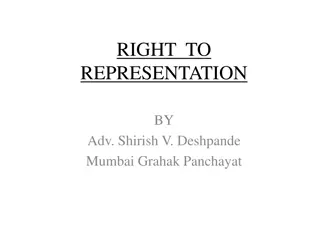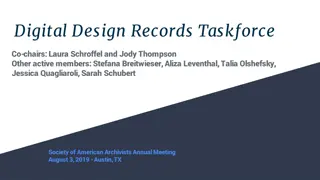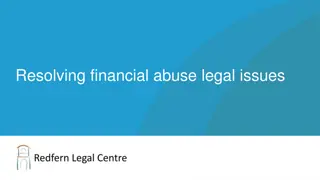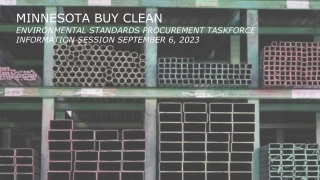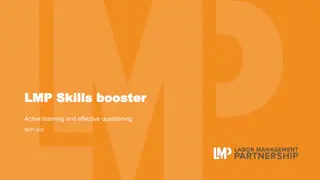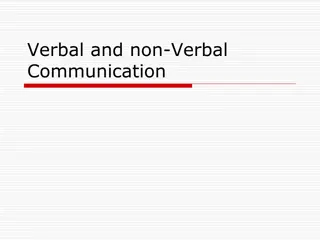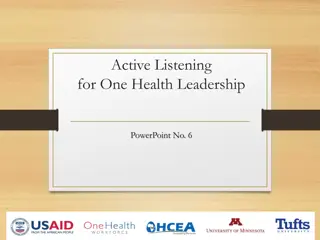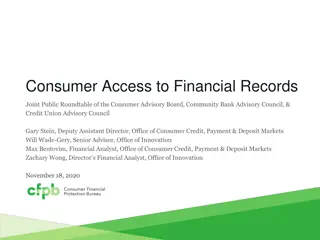Taskforce on Federal Consumer Financial Law Listening Session Highlights
The Taskforce on Federal Consumer Financial Law, inspired by a historical commission, aims to develop recommendations through transparent engagement. Topics include the legal framework of consumer protection, consumer information and education, and competition and innovation in the marketplace.
Download Presentation

Please find below an Image/Link to download the presentation.
The content on the website is provided AS IS for your information and personal use only. It may not be sold, licensed, or shared on other websites without obtaining consent from the author. Download presentation by click this link. If you encounter any issues during the download, it is possible that the publisher has removed the file from their server.
E N D
Presentation Transcript
Taskforce on Federal Consumer Financial Law Listening Session with CFPB Advisory Committees September 2020
Taskforce background The Taskforce is in part inspired by an earlier commission established by the Consumer Credit Protection Act (Act) in 1968. In addition to various changes to consumer law generally, the Act established the National Commission on Consumer Finance to conduct original research and provide Congress with recommendations relating to the regulation of consumer credit. The commission s report contains original empirical data, information, and analyses all of which undergird the report s final recommendations. The data, findings, and recommendations from the commission were all made public and the report led to significant legislative and regulatory developments in consumer finance.
The Taskforce Work The Taskforce will publish a two-volume report. The first volume will provide analysis and background which will undergird the recommendations that will be shared in the second volume. We are committed to ensuring the public can inform our work, through transparent and inclusive engagements. Today the Taskforce will listen and gather information as it moves forward with the work of developing recommendations The insights from today will serve as a guidepost for the recommendations that we will ultimately share with the Director. Our intention is to hear from the Advisory Committee members, and not to share our viewpoints or thoughts on these topics.
Discussion Prompt #1: Legal framework of consumer protection Consumer financial protection is promoted by a framework of laws, regulations, decisions, directives, regulatory policies, guidelines, recommendations and procedures made by numerous state and federal regulatory organizations. Are there areas in which existing consumer protection laws are inadequate or need to be strengthened to ensure consumers are adequately protected? o How can the Bureau use its regulatory tools of rulemaking, enforcement, supervision, and education effectively to maximize consumer welfare? o
Discussion Prompt #2: Consumer information and education Financial mobility and empowerment is enhanced by increases in formal education, financial education, and consumer choice. This is particularly true with vulnerable and protected populations. What actions can the Federal government take to enhance financial mobility? o Do you think that providing information for consumers in disclosures are adequate for protecting consumers? How should disclosures be updated for the electronic age? o
Discussion Prompt #3: Competition and innovation In competitive marketplaces there are typically abundant producers competing to provide consumers with the goods and services needed, and no single producer or consumer can dictate the market. Technology has led to rapid changes throughout the economy, and financial technology (or FinTech ) has led to the development of new financial services and nontraditional financial service providers. Are there markets where competition is not effective as it could or should be? Are there financial markets where competition does not create beneficial outcomes for consumers? o What conditions are limiting competition among financial institutions responding to consumer needs? Are there restrictions, legal barriers, or any other factors that limit financial service organizations providing services to consumers? o What trends in FinTech are you seeing today? What studies or regulatory reforms are needed to protect consumers while enhancing competition over the next ten to fifteen years? o
Discussion Prompt #4: Inclusion and access Access to credit is a driver for wealth creation. Are there regulatory issues that should be addressed at the federal level to promote greater access to consumer financial products and/or services to traditionally underserved or unbanked individuals? o What do we know about why consumers are outside the financial system? What do you think are the primary barriers to inclusion, and what public policies would reduce them? o How do potential new entrances (e.g. FinTech s or traditionally non- financial companies) play a role to increase inclusion? o
Discussion Prompt #5: Regulatory modernization and flexibility The development of the national economy of consumer finance led to the growth of consumer protections in the 1960s-70s. Today consumers shop for and use financial products differently than at that time. How do we protect consumers from new threats while enabling providers to develop new and better ways to serve their needs? o As the internet and smart phones make the world an ever smaller connecting the consumer to financial service providers directly at an instant, what is the impact on consumer financial protection and what becomes of the current dual system of state and federal jurisdiction over these matters? o The pandemic highlights the need to ensure the Federal government can quickly adjust and provide regulatory flexibilities. How do we create a system that is responsive to acute market disruptions (i.e. 9/11, the 2008 financial collapse, COVID) while providing a stable regulatory framework for consumers? o
